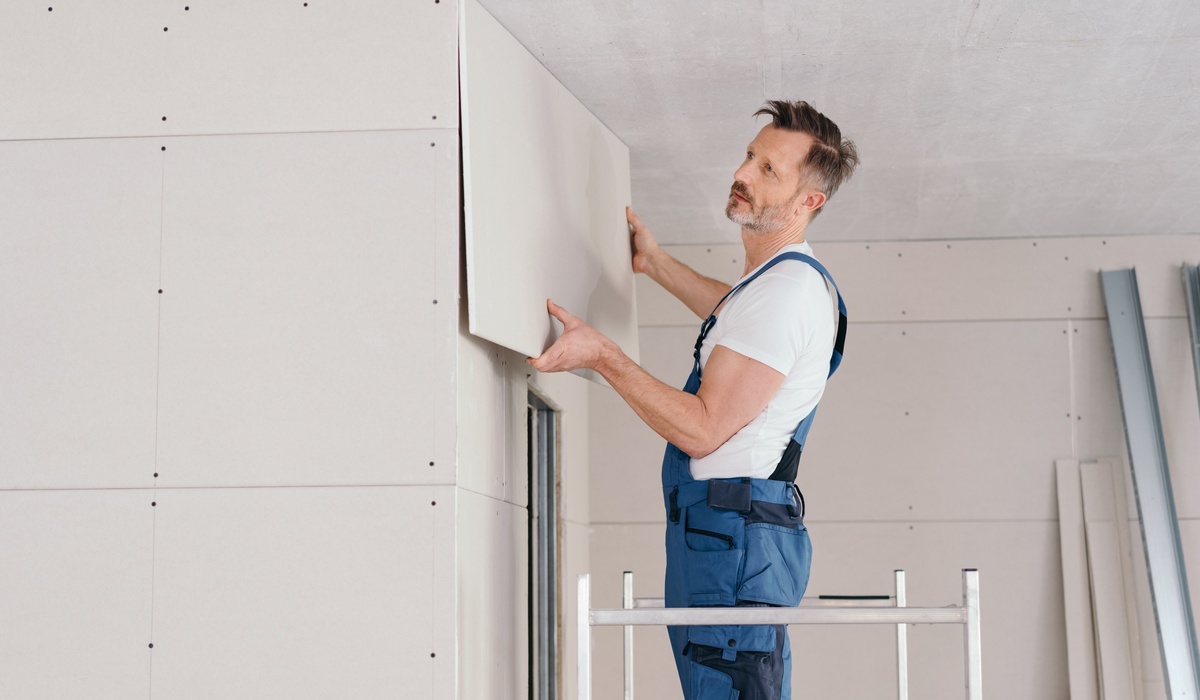4 Tips for Preventing Injuries When Installing Drywall
- Casey Cartwright
- D.O.C Supplements - Trending News
- Home Improvement
- March 26, 2025

Installing drywall is a crucial step in construction and home improvement projects, but it also comes with its share of risks. Handling large, heavy sheets of drywall, working at heights, performing repetitive motions, and using sharp tools can all pose potential hazards if safety precautions are not taken. This guide offers practical tips to help you prevent common injuries while installing drywall so that you can protect yourself on the job.
When installing drywall, maintaining proper ergonomics is essential to reduce strain and prevent injuries. It’s important to lift drywall sheets with your legs instead of your back to avoid unnecessary pressure on your lower spine. You can use a drywall lift or work with a partner when handling larger sheets to distribute the weight evenly and minimize the risk of muscle strain.
You should also ensure that your drywall bench is at an appropriate height to eliminate the need for excessive reaching or bending, which can place stress on your shoulders and back.
However, ensuring your physical safety also depends on a well-organized workspace. Make sure the floor is free of clutter and use tool belts, peg boards, or labeled containers to keep your equipment neatly arranged and within reach. This not only saves time but also minimizes the risk of accidents caused by tripping over misplaced items.
Additionally, wearing the appropriate personal protective equipment (PPE) is essential for ensuring your safety while working on any project. Depending on the nature of your task, this may include items like safety goggles to protect your eyes, gloves to shield your hands from cuts or chemicals, and ear protection to guard against loud noises. Always assess the specific risks associated with your work and select gear that meets proper safety standards.
While you’re assessing your work environment, it’s critical to inspect your ladder or scaffold for any signs of damage, such as cracks, loose parts, or corrosion, and never use equipment that appears unsafe. When positioning a ladder, ensure it’s on a stable, level surface and follow the “4-to-1” rule. This means placing the base of the ladder 1 foot away from the wall for every 4 feet of height. Always maintain three points of contact while climbing—a combination of two hands and one foot or two feet and one hand—to ensure stability.
For scaffolding, ensure proper assembly by qualified personnel and verify that all guardrails and toe boards are securely in place. Scaffolds must be equipped with a solid platform and capable of supporting the load they will bear.
By following these safety measures, you can significantly increase your chances of preventing injuries while you’re installing drywall. Proper planning, the right tools, and a focus on safe practices make a considerable difference in protecting your well-being on the job.
Prevention is always better than dealing with the aftermath of an accident. Prioritize your safety and approach every installation with care, ensuring that your work is both efficient and injury-free.








